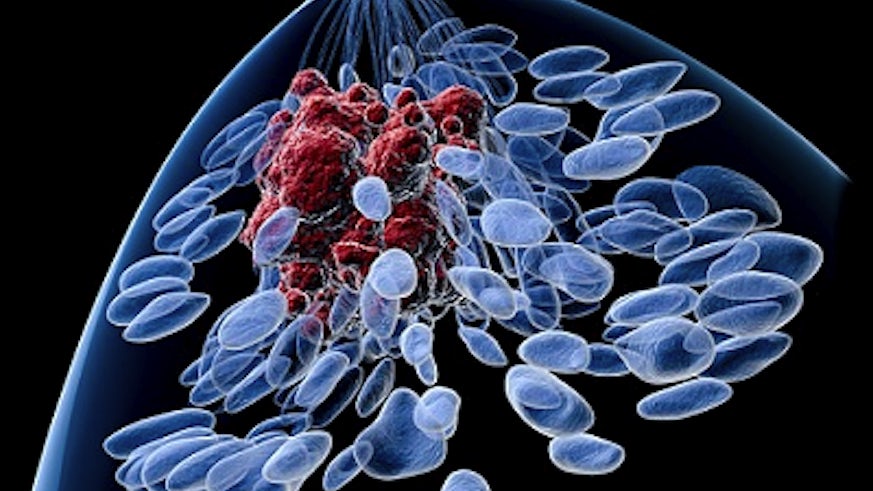The origins of breast cancer
1 Ebrill 2014

Breast cancers can look and behave very differently. Understanding why and how they do so is key to designing more tailored therapies for patients and sparing them unnecessary treatments.
In a new study published by the Journal of Pathology, Dr Matt Smalley from the University's European Cancer Stem Cell Research Institute treads new ground in exploring what drives breast cancers to look and behave so differently from one another.
"The ultimate aim of this research is to be able to take a more personalised approach to medicine," said Dr Smalley. "We hope that in doing so, patients get the therapy best suited to their variety of breast cancer and avoid unnecessary treatment.
"To understand what might be influencing the differences between individual breast cancers, we have used two different genetically modified mouse models in which breast cancers originate in different cell types in each model, by means of a genetic 'trick'," he explained.
"In one part of the study, we created the same cancer-predisposing genetic errors in each of the two cell types. In another part, we created different genetic errors in the same cell type. We then asked whether the tumour types which occurred varied more strongly in their appearance depending on the cells in which they developed, or the genetic errors that caused the cancers, or both."
Dr Smalley continued: "We found that for cells originating in one of the cell types, so-called 'basal' cells, the cancers appeared the same no matter the genetic error, suggesting that in this case the cell of origin was dominant in determining how the cancer formed. However, the cancers that appeared from this cell type resembled a very rare form of human breast cancer, so these cells are probably not relevant to the majority of human cases.
"In contrast, for tumours originating in so-called 'estrogen receptor negative luminal cells', the appearance of the cancers varied depending on the genetic errors used to generate them.
"Remarkably, some of the cancers that formed resembled common human breast cancer types including both estrogen receptor negative and positive disease. We had previously shown this cell type to be the likely origin of Brca1-associated and other aggressive estrogen receptor negative breast cancers.
"Our findings now suggest the same cells are also the origin of aggressive estrogen receptor positive cancers as well. These results add to our understanding of the origins of breast cancer diversity and empahsise the importance of understanding the biology of this cell type to better understand how breast cancer develops."
The research, spearheaded by Dr Smalley and conducted in collaboration with colleagues from Spain, Brazil and the UK, was funded by Breakthrough Breast Cancer and Cancer Research UK.
"The hope is that this paper will become a standard work of reference for mouse breast cancer research as there is currently no other benchmark for this type of work," concluded Dr Smalley. "It shows the quality of output from the European Cancer Stem Cell Research Institute as world leaders in analysis of mouse tumour models."
First author of the study, Dr Lorenzo Melchor, Post-Doctoral Training Fellow in Molecular Haematology at The Institute of Cancer Research, London, said:"Our findings show that multiple forms of breast cancer can originate from a single cell type, which could have implications for how we target and treat the disease.
"This study helps us understand why breast cancer is such a diverse disease. It tells us that it matters both which mutation initiates the cancer and what type of cell the cancer begins in, this information is really important to help us target breast cancer treatments to those patients who will benefit the most.
"Using new mouse models, we found that basal mammary cells tended to form a rare type of breast cancer, irrespective of the genetic mutation, while mutations in oestrogen receptor negative luminal cells were able to generate the broad spectrum of disease subtypes seen in humans, including both oestrogen receptor positive and negative breast cancers.
"It can be hard to disentangle the complex relationship between the genetic mutations driving cancer, the cells these mutations form in, and the cancer subtypes that result, but we have shown that the initiating mutation plays a bigger role in dictating how breast cancer develops than we previously thought."